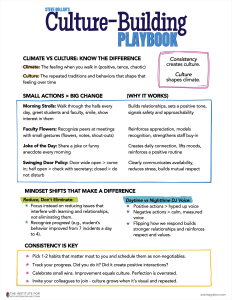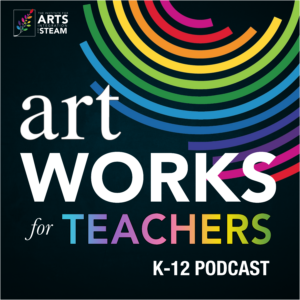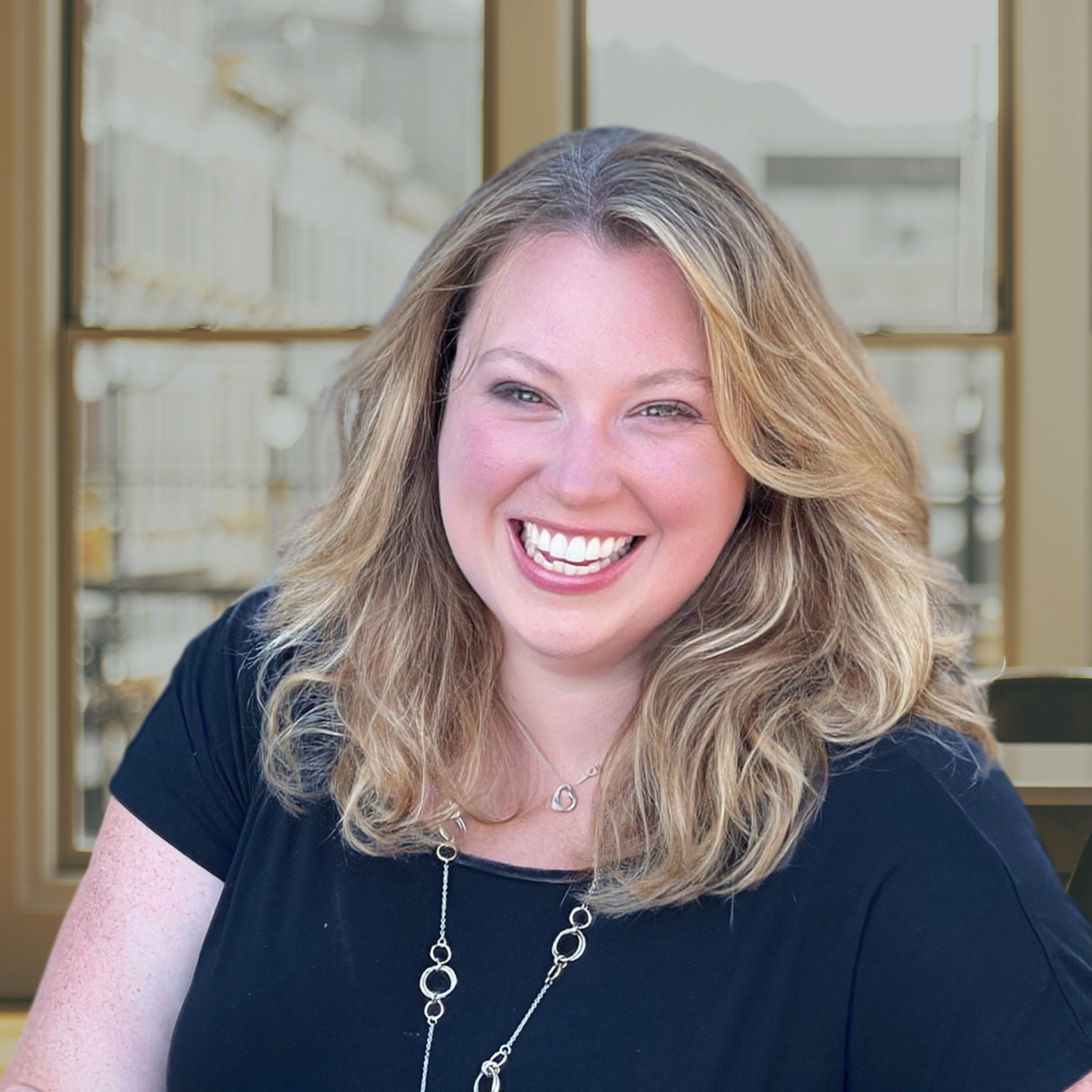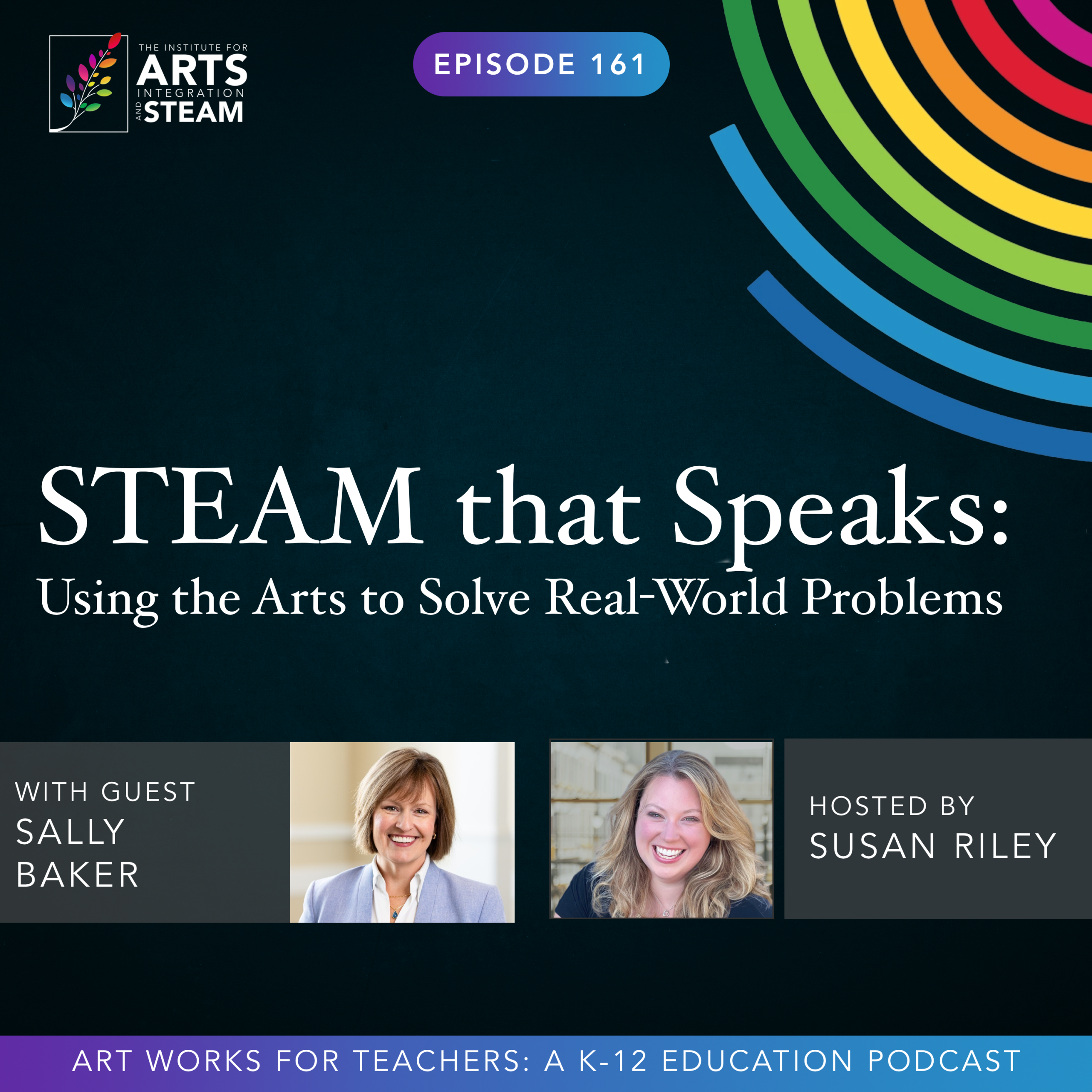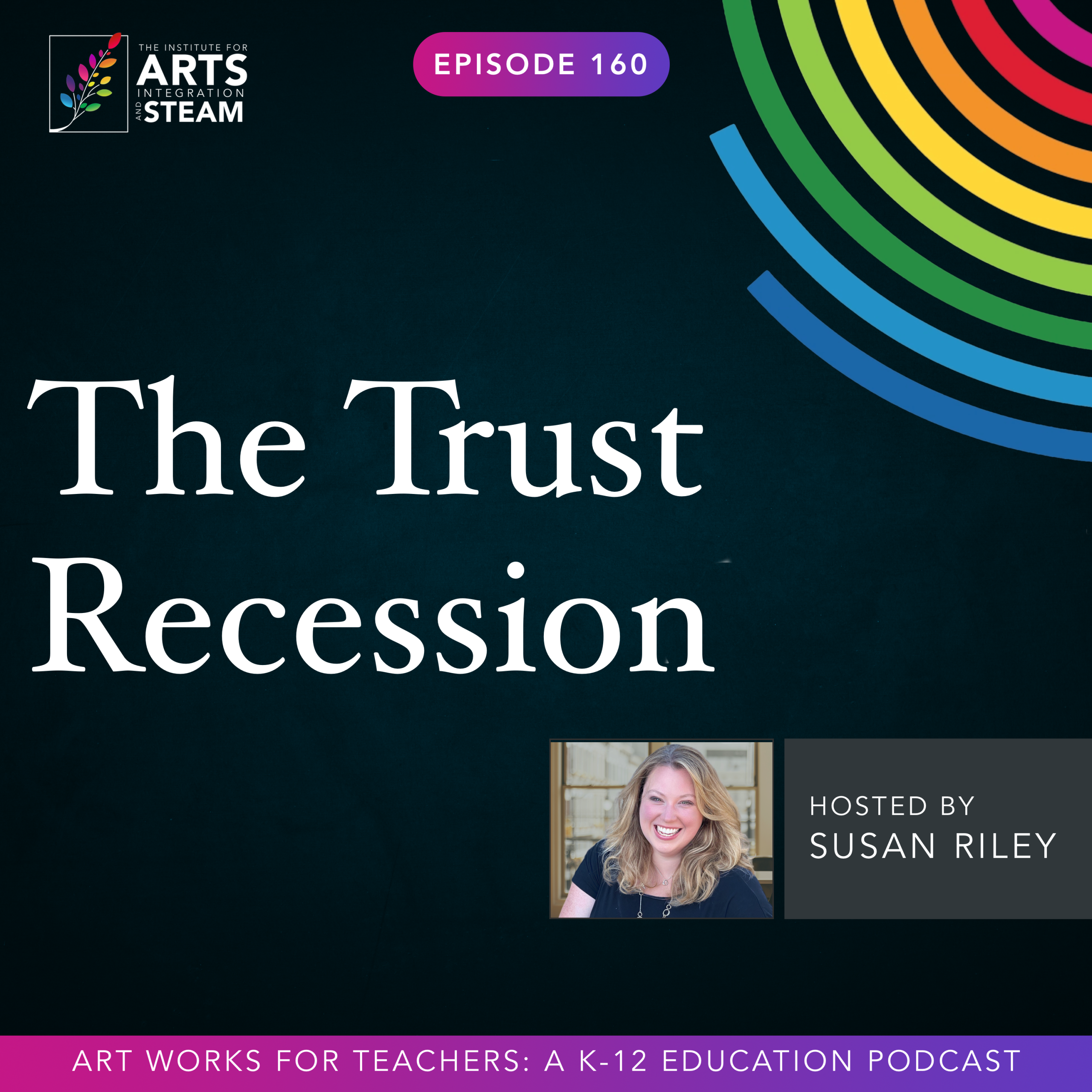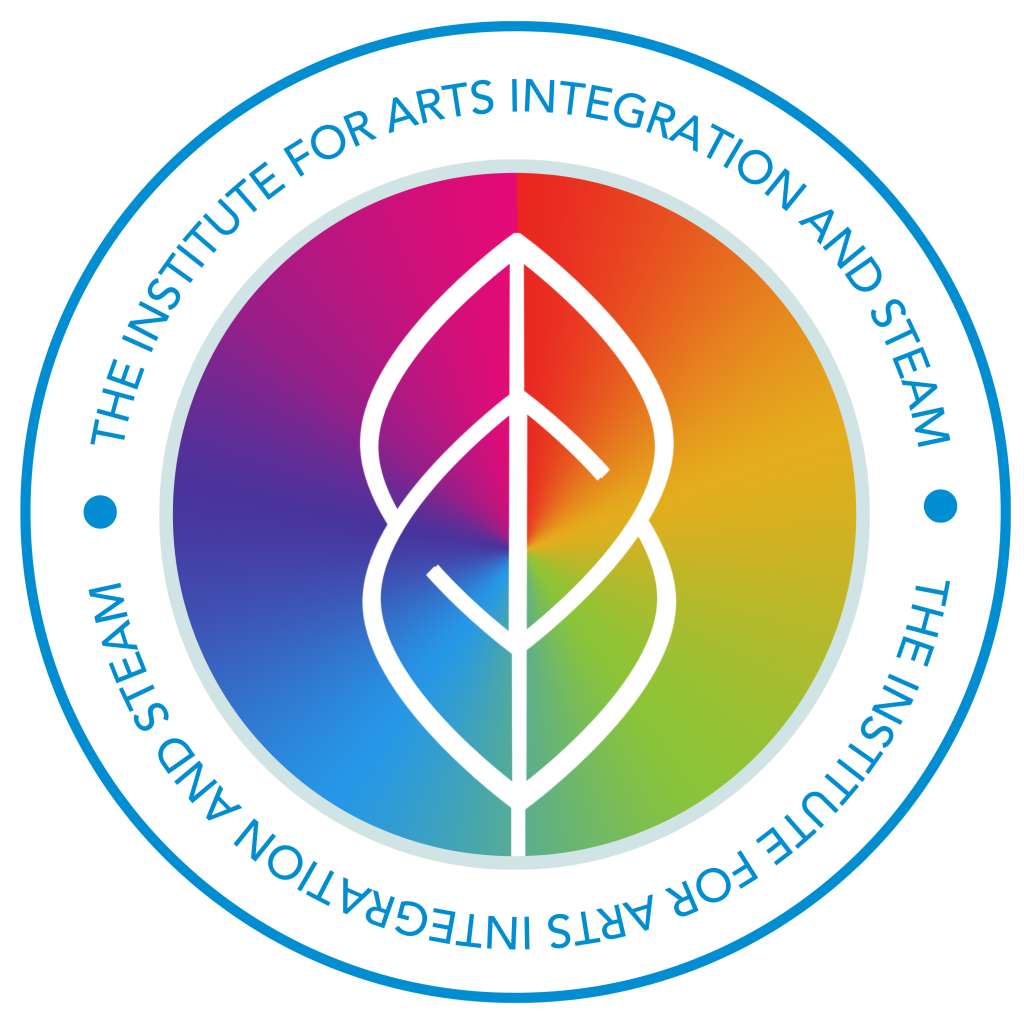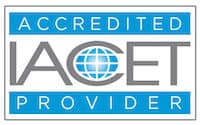ART WORKS FOR TEACHERS PODCAST | EPISODE 158 | 33:52 MIN
Small Actions, Big Change
Enjoy this free download of the Steve Bollar's Culture Building Playbook resource.
Welcome Steve, I'm so glad you're here!
Steve
Hey, same here. This is going to be exciting. Really glad to connect with you.
Susan
I'm excited too. So let's start from the very beginning. Can you share a little bit about your journey in education from art teacher to superintendent and what has led you to where you are now?
Steve
Yeah, definitely, no problem. Yeah, so I started off my career as an art teacher. Now, I'm a big guy, I'm a tall guy. That's why I go by the name Steve. I'm six foot seven. So I taught art pre-K to third grade, little tiny people, and it was fun. I loved it. They barely came up to my hip. I did step on some of them, but we settled out of court. They're fine. So I taught pre-K to third grade art for seven years in Lawrenceville, New Jersey.
I had an evaluation by my administrator, my principal, and it was a good evaluation. He did a post-evaluation meeting with me and it went fine. But at the end, he said, I'm getting up, getting ready to leave. And he says, Steve, by the way, I'm like, yeah, he says, make sure you go back to school and get your master's, you know. And this was like my third year of teaching or whatever like that, third or fourth. And I said, okay, thank you, sir. And he said, no, no, no, sit down. I'm like, why, what? No, I don't like the way you said that. What? He says, seriously, Steve.
Go back, get your masters, da-da-da, and all that. And I was like, be honest with you, Dr. Graha, I don't know what I want to get it in. I was a young kid right out of school, and he's just like, well, Steve, you get your masters, you can move up in a pay scale, you can get this, you can be a principal, you can do that. I said, whoa, whoa, I can be a principal? And he's like, yeah, you can be a principal, but I'm an art teacher. He says, art teachers can be principals. Yeah, I was stuck in that whole mindset that art teachers can only be, you know, and all that. And I was like, huh, that's something. So.
When I left there, I spent the rest of that year really diving into looking at principals. Like, what is it they do? And I was asking questions, I was trying to sit in some meetings and things like that. And I realized, I hate being a principal. I hated that position. I didn't want to do that. You I was an art teacher, creativity, love, hug a tree, you know, all those things. But that's what made me think like, you know what? There's not enough creativity in administration. That's why I'm going to do this.
So from there, I just got into a master's program and I decided, no, I'm going to be a principal. So eventually I became an assistant principal at a middle school for a couple of years, got my first principalship at an elementary school, and the bulk of my career was at the elementary and upper elementary level as a building level principal. Absolutely loved it. And while I was a building level administrator, I really got into the art of public speaking and talking and training because the climate and cultures in my school was very, very, very good.
So people asked me to come and speak. So that's where I came up with the concept of Steve. I started speaking, it grew, it grew, it grew. Eventually I became an assistant superintendent and then a superintendent of schools. And then I left the district, the month was March and nobody's hiring superintendents in March. So, you know, I was like, all right, you know what? Time to lean in on the speaking. And so that's what I did. I started speaking, training, consulting and… For the last eight years, this is what I do full time. I work with schools and education organizations everywhere on culture climate, leadership development, and idea development specifically.
Susan
I love this story, Steve, because I resonate with it so much. That's very similar to my introductory. I was a music teacher, elementary music teacher, and went into school administration. Same thing. If we can't get value, if I can't get other leaders to understand the value of music education and of the arts, then I'm going to go do it myself and start the model. So I love that. And so I'm curious because I know in my own work, my background as a music educator has heavily influenced how I lead and what I do and where, you know, the path that I've taken so far. So I'm curious, with your background as an art educator, how did that influence your leadership style and specifically around school culture and climate?
Steve
Yeah, that's spot on. Especially since I said the reason why I got into administration is to bring in a breath of creativity, to bring in a breath of looking at things differently. Now, let me put a precursor to all this. It wasn't easy on the beginning, all right? We all know what administration is like. It is very firm, it's very direct. There's expectations, there's compliance. And I was in there like,
Here we go. So there was there was a learning curve in there. But the one thing that I did not let go of is creativity, looking at things differently, looking at what the possibilities could be. One of the things and you know, this is a music educator as well as a visual arts educator. It's all about relationships. You you want to get the best performance out of students. You got to develop those great relationships so they can come out and do those things. If you want to get the great, you know, artwork or expression out of students you have to develop good relationships, not only with the content. So with that, going into administration, one of the things that I felt was outrageously important was developing those relationships and connectivity, not only with students, but with the staff. Like I went above and beyond to really connect with staff. Hey, what are you about? What's going on? How are you feeling? Hey, we're doing this. We're not doing that. And all those different aspects. One of the things, if I could do a little side story.
One of the things in my one school that I had, was there for eight years, was an upper elementary school, fifth and sixth grade only. We only had two grades in the whole building, 1200 kids. It was a big, big, big deal here in New Jersey. So there was a bulletin board in the main hallway. And in the past, the one bulletin board on the side was for the guidance department and the other bulletin board was on for the teachers and they rotated by month who got this big bulletin board. Well, I took over one of those bulletin boards.
I'm an art teacher. That's an empty canvas. So I still made sure that, you know, once a quarter I would go, I would stay after school, I would design it. It would focus on what the vision mission values of our school were. I would change the color, put it up there, just express myself. And one of the things that we know is that when the leader showcases certain values and certain expectations and certain behaviors, it does trickle down. Other people start feeling like they can be more expressive, more creative. And it was. The staff started being that way as well. So yeah, that whole creative piece of being an art teacher really, it was the cornerstone of my administration.
Susan
Yeah, I want to dig into this a little bit more, this component about relationships and specifically how creativity has connected you with relationships. Because to your point, we're like as a music educator, when I'm trying to get a student to really tap into their voice, but it's vulnerable for them, right? And it's scary because maybe it's a changing voice, right? It's like, it's a boy in seventh grade and his voice is changing and he doesn't want to stick out, right? Or you're working with a student in an art class who loves art but is so scared to truly express themselves, right? When we do that as arts educators and we develop that relationship so that it is safe in order to be vulnerable, creative, take risks, all the things that creativity allows us to do and taps into as a human. know, a lot of leaders talk about building relationships. And I think at this point, teachers kind of, they go, yeah, yeah, yeah.
I work at building relationships or yeah, my administrator says he wants to build relationships, but I don't see that in practice. So I would love, can you give some examples of how you built relationships in a way that your staff felt safe to be vulnerable and creative and take those risks, all the things that lead to incredible results in schools?
Steve
Yeah, definitely. There are a few different things that I did as a school administrator. Number one thing that I did is I called the door method. And I think this, I don't even know where I got this from. Maybe it was just me. So a lot of administrators say, I have an open door policy, right? Come on in any time, you know? And then when you get in there, rip the heads off or whatever. So what I said to my staff was, look, I have a swinging door policy.
If my door is wide open, come on in. Walk in, chat it up, I'll stop whatever I do. If my door is halfway open, stop off, check with my secretary. She'll check and see where we are. And of course, if my door is shut, please don't bother me. Don't even knock.
And everybody respected that. they know the pro, they could, you know what I'm saying? It's like they can do a quick view real quick and see where I am. Because sometimes when you're dealing with administrators, from a teacher's perspective, you don't know what you're walking into, right? Everybody administrators are like, well, I'm fair to everybody. No, you're an emotional wreck. All right. So.
I use my door as a gauge. Sometimes, yes, I'm willing to talk to people, but I got so much going on in my head right now, I'm going to put my door a little bit halfway. That way my secretary can check in with me to make sure that my head's okay before somebody comes in. All right? And nobody took offense to that. That's feeling safe. That's a safe way of doing things. The other thing that I did is and I think it's such a simple thing to do but you have to do your morning stroll You have to do your morning stroll first thing in the morning when the kids are all coming in Pick a route pick two or three routes that you do through your building. All right, mix it up So it's fun for you and you do your route in the morning and it's leave the the discipline All right of the kids to the teachers. Your job is the smile, pat heads, giggle, check in with everyone. Now if something breaks out around you, of course you go handle it. Keep your walkie close by in case something goes down, obviously. But my whole purpose in the morning was giggles and smiles, right? I'm going to go by and I'm going to, yeah, I'm saying hi to the students, but the teachers, I'm like, hey, hey, how we doing? What was your weekend like? Everything good? Check you out in that blouse. You're looking sharp. Hello, sir, how we doing today? I'm giggling and smiling with them just as much. They need to that sense of it's okay to talk to him kind of thing. It is okay to talk to him kind of thing, right? And have those side small little conversations with them that they're when they're doing something right and highlighting those things. That builds a sense of safety so that you can build those relationships and get the most out of them.
Susan
Yeah, I love that, especially the small connections that you make along the way, right? It's not about the big gestures. It's not about, you know, the big party that you throw at Christmas every year or during the holidays, right? It's the little things. And so talk to me, you talk a lot about the power of small, consistent actions throughout time, right? So talk to me a little bit about how those small but mighty ideas can kind of take shape or make a difference in school culture.
Steve
Okay, so the deal with culture is this. First of all, let's define culture. Because a lot of times people toss around the word climate culture, culture climate, and they don't even know what this is, right? don't even come up with this. Climate is the emotional state people feel when they enter a space. So when they come into the school, and I'm sure you've been in and of lot of schools, you walk in the door, you can instantly feel the negativity the second you walk in. You haven't even talked to anybody. And then there's other schools you walk in, it feels like Disney the second you walk in. So… climate is the emotional state you feel when you enter a classroom, a building, an office, anywhere you go. You can feel that. Culture is nothing more than a fancy word for traditions.
That's what culture really is. It's the traditional things that happen over time, again and again and again and again and again and again. So when we talk about small little things that are being done to help with the culture, these are the things that need to be done again and again and again and again. And then when you're done, you do it again and again and again and again, and then over and over. So that's why in some schools you have a negative culture, because there's these negative things that keep happening over and over and over and over again, as opposed to seeing the positive things. So those small little things that can be done consistently by the administrator, by the teacher, by everyone is making sure that you're checking in with everyone on a consistent basis. That's why I said that walk around, that route you do every morning, every single morning that you can, you do that route. It becomes a part of the culture, becomes a part of that good feeling, because the culture creates the climate. The consistency creates the feeling.
All right? So therefore, you need to do those tiny little things. Faculty meetings. When I have a faculty meeting, the teachers actually came up with this one. It's something called faculty flowers. So every time we have a faculty meeting, my secretary, who lived relatively close to the school, during her lunch, she would run out and grab a bouquet of flowers, or she would bring a bouquet of flowers in. Cheap ones, ones from the grocery store, 10 bucks, right? So we have our faculty meeting. Outside of the faculty meeting, we would put, we would open up the flowers and lay them on a table. All opened up. As teachers came into the faculty room, they would pick up a flower if they so chose. So we would start off the meeting, okay, before we begin, faculty flowers. Whoever had a flower would stand up and say, hey, I just want to say thank you to Mr. Devry. You helped me out this week when I had to run to the restroom and you covered my class. Here you go. And the teacher would pass a flower to another teacher. Another teacher would pop up and say, hey, Ms. Johnson, you know what you did. I can't tell everybody what you did, but you know what you did. Here, girl.
And it's a way for teachers to recognize each other. Small little gestures that they did it, but it's the consistency of doing it. Because what happens is we do it one time for a faculty meeting, then we forget. When I work with schools and I work with administrators about their culture, the top thing that we do once we come up with ideas is I say, out your calendar. Write it in the calendar every other week or every week for the whole put it in there so that way it's consistent that's what builds culture is that that consistency of doing that every morning at my when i was a building administrator we did a joke of the day it was a good the jokes weren't funny they weren't we what we call they call them dad jokes now but back in the day they were just bad jokes but i did it every single morning the kids would roll their eyes the teachers would roll their eyes but
It was that consistency of, we're going to have a positive morning. We're going to start off with a smile. We're going to start off with an eye roll. And it helps build that culture, that consistency of doing things over and over and over again to get the results that you want to see.
Susan
Yeah, I think that's actually a key point that so many people miss is the consistency thing. And on the additional side of this is that they'll start with, I have a thousand ideas of ways to improve culture, right? And we're gonna implement all of them. But I'm sure that you would agree with me when I work with schools like that, I'm like, wait, wait, wait, let's pick one or two that you know you can do without fail every single day so that it's boring.
I feel like culture should almost be boring. It's the thing that you just do and then it impacts the climate, which is what I want to get into next. So when we talk about climate, you're right. It is the feeling of when you're in that building. And that is what I think so many people are frustrated with right now in schools, right? They say it's school culture, but what they really mean is climate. So from your experience, what are some of the biggest challenges that schools are facing right now when it comes to climate and how can we address some of those?
Steve
Yeah, the biggest issue and that's a wonderful question. And it's hard to even put a finger on the biggest issue. Each individual school has their own culture which causes a certain climate. a part of that problem with climate is the overall expectation of the staff and students. Unfortunately, it is so low. Their expectations is low. And again, it goes back to the consistency of it. know, when times we start off the top of the school year with some great ideas and we're rocking and rolling August, September, come February, we still doing that? What are we doing? I remember that at beginning of the year, right? And all our veteran teachers are like, don't worry, honey. It's like that all the time, whatever, you know? So that lack and that low level of expectation, that's what we need to tap into is the fact that we know that all educators aren't expecting this to continue. And when you do find something that's positive that makes a good feeling and it's not just an event because that's the thing we grab events. Right spirit week or you know potluck will bring all something in it last. It's a bandaid. Find something that can be done consistently. Week after week. Day after day even month after month even that can continually cause a good feeling and keep it going. And even if it becomes numb, they know in the back of their minds, the purpose of this is to help people feel better. And I guarantee you, come February, March, April, people are like, oh, we are still doing that. Oh, wow, this is actually happening. So you do that for a year, maybe even two years, then all of a sudden people are like, you know what, we stuck with this one, let me join in.
You always talk about what? Staff buy-in. How are we going to get buy-in? The way you get buy-in is to have consistency from the beginning. Because then people see that you're serious about it because the bar is so low and then they start joining on those like, you know what? That does feel good. You know what? Hey, that is not that hard. Because once something becomes culture, then that's the status quo. It won't feel like it's something else to do because that's the biggest argument, right? It's something else we got to do.
Once it becomes culture, it doesn't feel like something else to do because that's consistency. That's how you move the climate to feel better is anchoring. And that's the other piece. You got to anchor your culture to what you respect and value, what you collectively respect and value. And then you're going to start getting that culture piece. I mean, that climate piece where it's feeling better. Our emotions are better in that aspect.
Susan
Yeah, it feels like links in a chain. Like you have to have this piece and then it's tied to this piece. Nothing stands alone. It's all linked together and anchored into that biggest piece, which is that consistency piece, right? So in your book, Just Do This, which I love, right? You cut through theory, which I'm such a, I so appreciate this because so many educational academic books are theory based while you've got theory in there, you're given some real strategies that teachers can use right away, which I love. So how did you design these strategies with both creative freedom and structured? That's a part of it.
Steve
Yeah, thank you for that. The book that I have, Just Do This, first of all, I titled it because educators are just like, just tell me what to do. Tell me what should I do? Okay, well, just do this. And it's not too complicated. The whole purpose of this is to make it simple and easy enough that you can actually do it. And at the end of each chapter, I clearly outlined this is how you do it in the classroom. This is how you do it in the building. This is how you do it in the district because that's the other thing. You have several different books, one's for classroom management, one's for building global class, it is a few district books, there's not that many at all. This way it explains exactly what the concept is in each one of those. So in coming up with these ideas and the implementation pieces for each of the different areas, my goal was simplicity. Simplicity. Yes, I touch on the theory, all right? Give me the theory, give me the research behind it.
All right, there you go. This shows that it's real. Now here's how you can implement something so simply that it doesn't feel like it's an overwhelming thing to do. Like identifying what you all respect and value. Here's a list of words. Everybody pick one. That's what we respect and value collectively. Are we all in agreement? Yes. Boom. Ready to go. It's just, I want everything in there to be able to read, implemented by the next day within two to three days longest. Right?
That's the way that I'm trying to think of this, because that's what teachers and educators want. They want simple, easy, and get big outcomes from that. And here's the other thing about idea generation, because I speak on culture, climate, leadership development, idea development. When you get new ideas, the goal is not to turn off your brain if the idea doesn't match you perfectly because that's what happens sometimes. Let's say you're an elementary person, you see an idea, that's a secondary high school idea. Not for me. No, no, no, no, Looking at new ideas generates new ideas, right? So when you're looking at a new idea in the book, just do this, I pop in a ton of those little ideas, even if it doesn't fit you perfectly, it should generate a new idea that could fit you differently. The goal is to get your mind in the idea track so that you're popping, I mean, it feels good to come up with new ideas.
Steve
to figure out how to do those things. So that's what I was trying to do within that book is not only connect the theory, make it very simple that you can implement with two to three days max and generate the idea process in the brain so that you can come up with additional ideas quickly.
Susan
Yeah, yeah, the mindset piece is so important because I see that all the time, right? Like we'll share ideas or even in conference sessions, somebody will say, that's an elementary strand or that's a secondary strand. I don't care, give me the idea so that, right? So that I can then take it and make it mine. And so if you had to pick maybe one or two of your favorites from that book that you feel like would have the biggest impact for teachers who are listening, what would they be?
Steve
Okay, all right. There's two different things. All right. It's called the first one is reduce not eliminate. All right, reduce not eliminate. Now this is even idea. This is a mind. We talk about mindset. All right. In education, we have issue problems and concerns, right? We do. They're everywhere. Issue problem concern a variety of different things that are going on. And whenever we have issue problems and concerns, what do we do? We put together a committee. That's what we do. We love a good committee, right? We put a committee together.
So we get a committee together and we sit down and we talk about what we can do to eliminate these issue problems and concerns. We have a behavior issue. What are we going to do to eliminate? We have an attendance issue. We got to eliminate. We have an achievement gap. We got to eliminate it. We have a parent issue. got to, you're not, you're not going to eliminate it. Right? Air quotes. That kid has been around for hundreds, if not thousands of years. That kid, when that kid leaves another, that kid is coming.
Some of you guys who are watching or listening to this was a that kid. You're not getting rid of that kid. So instead of going into these committees, thinking about what we can do to eliminate the issue problems and concerns, instead, the concept that thought needs to be, what can we do to what? Reduce. What can we do to reduce the issue problems and concerns? Because if you're reducing the issue problems and concerns, it increases the probability you're to be able to do what you really want to do, which is teach.
That's what we want to do. We want to reduce to increase the probability that you're going to be able to teach. Now, if you put things into play and you don't utilize that new time that you have to teach, that's on you. But that's way it is. Here's the last little piece of reduce, not eliminate. Recognize the reduction. Recognize the reduction. A lot of times we put things into play to reduce it, but then we don't even recognize the fact that it's reduced.
Stevie's running out of the classroom, his elementary, runs out of the classroom seven times a day, right? Like he's just always run out of classroom. We put things into play. Now Stevie runs out of the classroom four times a day. What does the teacher do? Well, he's still running out of the classroom. Still disrupting. No, but it's reduced. If you're not recognized in reduction and utilizing that time, now we got a problem. So that's the first concept, right? Reduce, not eliminate. It's a mindset. Second concept is called daytime DJ voice, nighttime DJ voice.
All right.
So let's think about when you listen to the radio. If you listen to the radio, the DJ on the radio, I still listen to the radio. I know a lot of people stream things, but I still listen to the radio. So the late, late, late night DJ voice, what does that sound like? Mellow, soft, smooth, right? It's a big Steve on the radio, y'all back up and listen to this, right? Smooth and mellow. Now let's flip it over to the daytime DJ or better yet, even morning, morning daytime DJ voice. What's that like? Hyped up, yeah.
Over the top, hey, it is a big thief in the morning. Everything's going great. Hey, the weather over the top, right? So we have the two voices nighttime, smooth, mellow, smooth daytime, hyped up, energetic. Here's the thing. I believe in education. A lot of times we're using these voices backwards. When we're talking to kids, student does something you don't like something that goes against what you respect and value. Hey, get over here. What are you doing? How many times I have to tell you, listen to me.
That's your daytime DJ voice for something negative. Student does something right, does something that you respect and value.
Good job, keep it up. Hey, way to go. That's your nighttime DJ voice for something good. No, that's backwards. It's backwards. Student does something that you respect and value, something good. Hey, there you go, look at you. So proud of you, whoop, whoop. Student does something you don't respect and value, something wrong. Hey, get over here. Let's have a talk. What are you doing? The only time you should use a daytime DJ voice for something negative is for safety reasons. You need to get their attention right away.
But after that, you bring it down to the lowest emotional level. We have it backwards, y'all. We talk about relationships, building connections with students, building connections with others. Think of your tone. A lot of times we don't think about that. I don't care if it's pre-K to 12th grade, kids love to see adults get hyped up. Why are they only seeing you get hyped up over negative things? Those are the kind of concepts that I'm utilizing in the Just Do This book. It's theory, but yet it's also practice of utilizing those concepts.
Susan
That's so powerful what you just shared, so so powerful. Why are they only seeing us get hyped up about negative things right there? Is it you we could spend an entire podcast on just that scene Before we head out though, I want to just thank you. First of all, I loved learning from you today I will use the DJ voices for sure that's gonna be so applicable but beyond that, I just want to thank you for everything that you've done in education and continue to do to support teachers and educators across the board. Where can people find you, stay in touch, and bring you out to support them?
Steve
Hey, I appreciate that so much. Yes. Uh, go to my website, stand tall steve.com. I'm Stand Tall Steve, go Instagram, Stand Tall Steve on Facebook, Stand Tall Steve… LinkedIn is Steven Bollar, but you type in Stand Tall Steve, you'll find me. Uh, and that's what it will be. You can get me there by my books on, uh, Amazon. You can go to go there, put Steve Bollar, Stand Tall Steve in the area, all my books will pop up. I'm really excited. We have some fun things that are coming up with, uh, what I do. Uh, number one.
In December, I'm connecting with Innovative Schools Summit in San Antonio, and we're doing a three-day, it's called the Just Do This, Climate and Culture Boost Camp. So it's a boost camp. If schools, teams, teachers, educators come, and we are going to realign your culture climate, you will walk out with a blueprint to boost your boost your climate and culture. It's going to be absolutely wonderful. Go to my website, StandTallSteve.com or check Innovative School Summit. And I also provide something called Within Our Ranks. It is training for educators who want to speak professionally. If you ever are a K-12 educator, you want to speak, train and consult, you just don't know what to do, go to WithinOurRanks.com and we provide training to help educators get there and do that.
Susan
I love it because we need more of those educators out there, right? We got to spread that word. Steve, thank you so much for joining us today. I really appreciate it. And thank you for everything that you've done.
Steve
I appreciate it so much, it was fun. This was great. Thanks for putting the good word out there for everyone.

